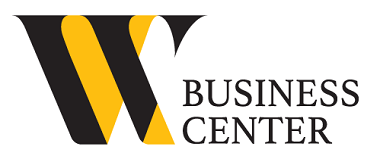To set and attain your business goals, advanced planning is crucial. Every company must keep an inventory on hand to satisfy customer demand. Proper inventory planning and replenishment produce profitability and flexibility throughout the supply chain. Through accurate demand forecasting, replenishment planning primarily aims to assure order fulfillment while lowering overstocking and waste output.
Supply chains are currently dealing with extraordinary variations in demand around the globe. Due to poor replenishment planning, vendors and retail establishments have difficulty meeting client demand. Planning for restocking is necessary and helps organizations satisfy customer demand, preventing out-of-stock problems. Replenishment planning, however, is challenging, considering factors such as supplier lead times, transportation routes, pricing, availability, etc.
Finding a balance between inventory needs and customer service standards is needed to increase sales and revenue. Replenishment, to put it simply, is the process of placing new orders for in-demand inventory that is either low on supply or out of stock.
Replenishment planning enables a company to quickly adapt to changing demands by matching consumer demand with its manufacturing, distribution, and procurement capabilities. The purpose of replenishment is to ensure that the store always has the appropriate number of products available at the appropriate time and place to cut costs and boost revenue.
Why is Replenishment Planning so Complicated?
In supply planning, the task of forecasting demand for various retail locations and many Stock Keeping Units (SKUs) along the supply chain is crucial. Each sales channel presents its own set of complexities in the replenishment process, such as consumer preferences, market demographics, product seasonality, local competition, shipping duration and expenses, proximity to the distribution center, and target audience demographics. These variables add challenges to the demand estimation process, making supply planning a crucial component of the supply chain.
Because of this complexity, retailers have now turned to replenishment planning solutions that utilize artificial intelligence and machine learning algorithms to estimate replenishment requirements accurately.
How Can Optimized Replenishment Planning Help?
Revenue Growth
While maintaining a healthy inventory, an automated replenishment planning system helps stop overstocking and understocking. Order fill rates must be met while preventing excess stock and minimizing the possibility of losing sales to improve business ROI and long-term profitability.
Better Efficiency and Effectiveness
Due to automated replenishment, businesses can now make data-driven and better-informed procurement decisions, ensuring that the right stock arrives at the right place at the right time.
Detect Anomalies
Instead of just buying more products, businesses may evaluate and use trustworthy real-time data to pinpoint the root reason for lost sales and take proactive measures to fix the problem.
Staff Capacity
Utilizing tried-and-true algorithms, restocking activities can be automated, reducing labor time for manual purchase administration by up to 50%. As a result, employees can concentrate on projects with higher value, and revenue for employing laborers can also be saved.
Improved Customer Experience
Automated inventory planning and replenishment ensure that there is always enough inventory to meet client demands weekly, which is crucial for promoting long-term client contentment and retention.
Quality Control
Through wave picking, zone picking, batch picking, and hyper picking, inventory planning systems can automate the process of picking, packaging, and shipping. You can ensure you distribute the relevant products to the correct clients using a productive selection process with quality control. It can reduce returns, maintain correct inventory counts, and prevent stockouts.
Improved Supplier Relationship
Stockouts occasionally happen for causes that are out of your control. It’s possible for suppliers to put off deliveries, which would obviously reduce inventory levels. Building crucial relationships with all suppliers is essential, as is ensuring better communication so that you can understand their difficulties and prevent the delay from impacting stock levels. You should also talk about any potential modifications or issues. It would be beneficial if you also paid your debts on time.
You should also give your suppliers considerable time to supply products. Setting deadlines and guidelines as soon as possible will help suppliers avoid production issues. The delivery can be expedited this way, and the goods will be delivered on schedule.
Stop Miscalculating Safety Stock-Levels
In the past, businesses set their inventory levels at a certain level. It is necessary to set up a minimum par that is only valid for in-person transactions and does not apply to online purchases or other types of fulfillment. To address the constantly shifting demands of consumers and multichannel engagements, it takes more than just using general information. Stock levels must be changed to leverage capital and meet incoming demand.
Every retailer’s biggest nightmare involves inaccurate dynamic safety stock estimations. Fortunately, an automated replenishment planning system greatly simplifies this particular chore. Analytics for inventory monitor customer information to determine the proper inventory levels and replenish stock as required.
About the Company
With the help of Kronoscope, an AI-powered inventory planning and replenishment tool from Fountain9, businesses may receive aid in effectively planning their replenishments. The software takes into account distinct parameters to estimate demand and plan inventory in an efficient manner. Stock waste is reduced, and instances of overstocking and understocking are avoided. The software can also determine the preferred/best suppliers by considering variables like lead times, price, etc.
Regarding expected quantities, inventory levels based on shelf life, vendor limitations such as lead times, fill rates, and MOQs, dynamically adjusting safety stock levels, and suggested purchase order numbers, Fountain9 brings everything from the demand and supply sides together. With just two clicks, all of this is handled, and any ordering system may be fully connected. As a result, businesses can increase customer satisfaction by timely serving demand across all distribution sites.
this is approved @[email protected]
_Assigned to Shobhit Gaur_

